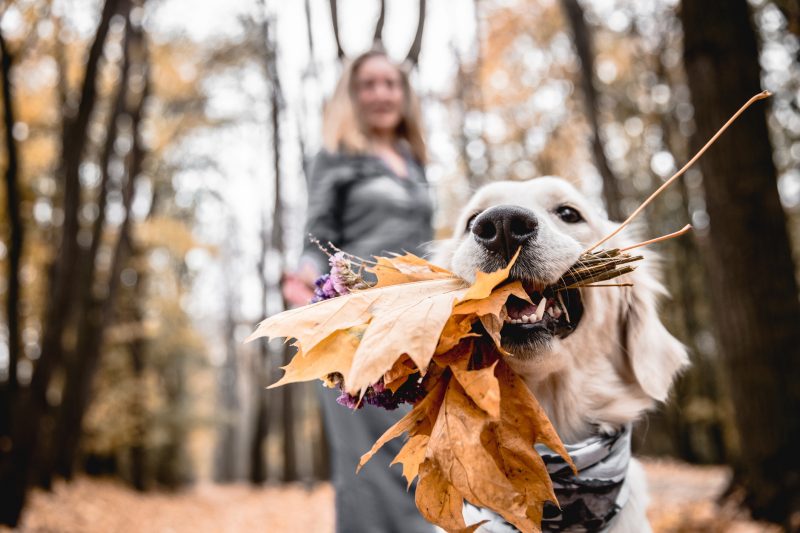Incontinence in Dogs

Incontinence in Dogs – What does this mean?
We normally refer to incontinence as being when a house-trained dog starts to lose control of their bladder function. The degree of incontinence can vary from small urine leaks to a large loss of urine. This can potentially cause distress to both the dog and their owner.
Onset may be evident through changing toilet habits. For instance, a dog who has been able to control their bladder during the night suddenly has a loss of bladder control.
Incontinence is unfortunately a common condition. Some of the many potential causes and ways to manage them are explained below.
Spotting the symptoms
There do not need to be pools of urine to indicate incontinence; it may be evident by just dripping. The sleeping area could also show dampness and you may not even notice this at the start. Additionally, if your dog is licking their vulva or penis area more than usual, this can be another symptom.
Of course, the need to go out during the night is also a clear sign that there may be incontinence issues. Minor dripping may cause secondary infection, particularly in older dogs. So, rashes, redness or infection in the rear area may be an indication of oncoming incontinence issues.
Possible causes of incontinence in dogs
Faecal incontinence is more likely to affect larger breeds and is often related to neurological disorders or skeletal degeneration. It could even be caused by parasites. Once again, your vet should be consulted in order to get an accurate diagnosis.
Another common cause is overweight or even obesity in your dog. The weight problem needs to be addressed first and this is likely to help the incontinence.
Treatment and management
When you have identified the condition, you can start with a program of management or treatment. It may not be a major problem.
Treatments may include medication, which in many cases can be very successful. A dog with a hormone imbalance will of course need to receive hormone supplements to address the issue.
Management of the incontinence rather than medication is also an option in many instances. More frequent walks, particularly early morning and last thing at night can help. As a dog gets older, you may have to change your own routine to help your dog manage their incontinence.
Often the condition may be mild and restricted to small leaks during your dog’s sleep. In this case, continue with your normal routine for relief outside the home, but provide dry bedding with a waterproof layer.
There are special nappies available for dogs that suffer from this condition. They should be worn during the night or even more frequently if required. Keep control of the rear end area; and help your dog keep its vulva and abdomen clean. This will help to avoid rashes, irritations and secondary infections.
Quality of life
Incontinence in dogs can be emotionally distressful and this may change their behaviour and demeanour. If the incontinence is due to a more serious condition, such as chronic liver or kidney issues, it can have a serious effect on your pet’s quality of life and should be carefully monitored. A dog with an uncontrollable bladder or bowel will also cause challenges for pet owners and affect their own quality of life.
Faeces and urine in the home will obviously be disturbing and be a risk of infection. This is especially the case in a home where there are young children or elderly people.
A very disturbing secondary consequence of incontinence can be fly-strike. This is a painful and potentially fatal condition caused by flies laying eggs in another animal. The eggs hatch and the maggots then feed on the host animal. Fly-strike is a risk if your dog cannot clean themselves properly and they have unhygienic rear quarters. The risk of this will be increased by either urinal or faecal incontinence.
There are certain helpful tools that can measure your pet’s quality of life. Incontinence in itself is not an issue that would cause end-of-life worries. However, combined with other contributory or underlying disorders, this may be a risk.
You know your dog best and controlling their quality of life, as well as your own, is a vital part of being a pet owner.
Tags: Dog ageing, Incontinence[Sassy_Social_Share]


